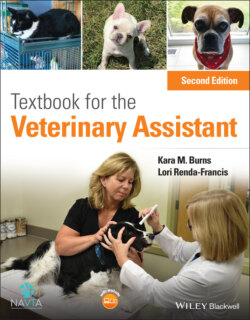Читать книгу Textbook for the Veterinary Assistant - Lori Renda-Francis - Страница 68
Reptile restraint
ОглавлениеMost snakes can be picked up in the transport carrier, especially when dealing with nonaggressive snakes. For aggressive snakes, a towel may be used by tossing the towel over the snake and finding the head of the snake. Once the head is located and restrained, it is safe to remove from the carrier. It is best to gently grasp the snake behind the head with one hand and support the body with the other hand.
Aquatic turtles, also known as chelonians, are considered easy to capture. However, restraining a chelonian involves controlling the head. To gain control of the head, the health‐care team member should put their thumb on one side of the cranial neck portion and the index finger (or fingers if a larger animal) on the other side of the neck at the base of the skull.
Lizards typically can be held with two hands and removed from the transport carrier. However, some lizards are aggressive or the species’ natural defenses will prevent one from simply picking up the lizard. In this instance, long‐sleeved shirts, gloves, and a towel may be necessary. Frightened lizards may try to bite or scratch with their long claws. It is recommended to keep one hand on the neck, immediately behind the base of the skull, to prevent being bitten. Do not try to capture a lizard by the tail. Many species have a natural response to “drop” their tail to escape, and this may happen if they view the restrainer as a predator. Restraint of lizards can be obtained by placing one hand again around the neck and pectoral region and the other hand supporting the body near the pelvic region. Apply only enough pressure to keep the lizard restrained, as too much pressure may damage their spine.
